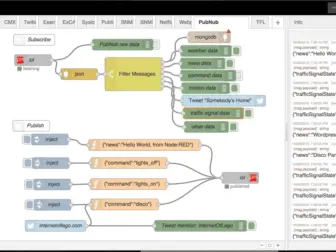Tag - Visual programming IoT
Exploring the Potential of Visual Programming in IoT
Visual programming in IoT refers to the use of graphical elements and visual cues to create and manipulate code for IoT devices. This approach simplifies the programming process by allowing users to drag and drop blocks of code rather than writing lines of text-based code. This shift towards visual programming has the potential to revolutionize the way IoT applications are developed and deployed, making it more accessible to a wider range of users.
One of the key advantages of visual programming in IoT is its ability to lower the barrier to entry for individuals with limited programming experience. Traditional text-based coding can be intimidating for beginners, but visual programming tools provide a more intuitive and user-friendly interface. By using visual blocks to represent different functions and logic, users can easily create complex IoT applications without needing to have specialized coding skills.
Another benefit of visual programming in IoT is its potential for rapid prototyping and iteration. With visual tools, developers can quickly build and test different configurations without having to write and debug extensive lines of code. This allows for faster development cycles and more efficient troubleshooting, ultimately speeding up the time it takes to bring a new IoT application to market.
Furthermore, visual programming can help improve the scalability and maintainability of IoT projects. By using visual representations of code, developers can easily visualize the structure of their applications and identify potential areas for optimization or expansion. This can be especially beneficial in large-scale IoT deployments where managing and updating a complex network of devices can be challenging.
Despite its many advantages, visual programming in IoT does have some limitations. For example, visual tools may not always offer the same level of flexibility and customization as traditional text-based coding. This can be a drawback for more experienced developers who require finer control over the intricacies of their code.
Additionally, visual programming tools may not always be as efficient or optimized as manually-written code, which could impact the performance of IoT applications. It is important for developers to carefully consider the trade-offs between ease of use and performance when deciding whether to adopt visual programming in their IoT projects.
In conclusion, visual programming in IoT has the potential to significantly impact the way IoT applications are developed and deployed. By providing a more accessible and intuitive way to create code, visual programming tools can democratize the field of IoT development and empower a wider range of individuals to build innovative connected devices. As the technology continues to evolve, it will be interesting to see how visual programming shapes the future of IoT.
